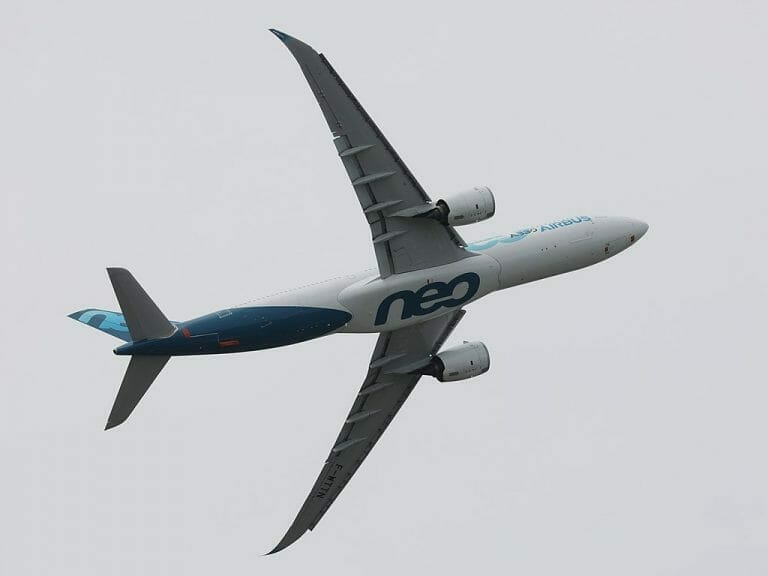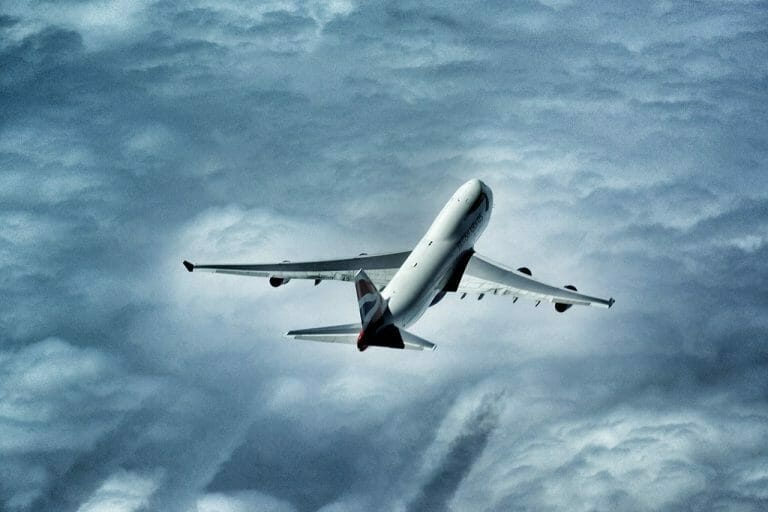Getting used to the miracles of technology is the strangest human trait. People are sitting at an altitude of 12 kilometres without even thinking about it. There is no fear, no admiration – people are just bored. But why do commercial jets usually fly at an altitude of 9-13 kilometres? Why not higher or lower?
The Embraer E195 and Boeing 737 can climb to 12 km altitude, the Airbus A220 and A320 can fly half a kilometer higher, while the 747 and A380 has the service ceiling of 13 km. And other commercial jets do not stand out from this crowd either. Of course, we would find exceptions – the beautiful Concorde was once able to climb to a height of more than 18 km. Meanwhile, the ATR 72 and De Havilland Canada Dash 8 turboprops do not touch the 8 km mark. But the absolute majority of modern commercial airplanes travel at an altitude of 9-13 km.

Why don’t planes choose a lower altitude?
An airplane burns more fuel as it takes off and climbs to a cruising altitude. And the fuselage is exposed to more stress at higher altitudes because the pressure differential between inside and outside there is greater. In case of a decompression event, passengers and, most importantly, crew members must quickly put on oxygen masks because the air at higher altitudes is scarce. So why do we fly at such a great altitude?
There are several reasons for this. Flying at a higher altitude is safer. Heavy storm clouds, small aircraft and birds are not a problem for high-flying planes. In addition, an aircraft experiencing technical issues has a better chance of finding a suitable airport for an unplanned landing if it is flying at a greater altitude. Even with a complete engine failure it is possible for an airplane to glide quite far, if it is a bit higher.

But there is another very important reason why commercial airplanes fly so high – fuel consumption. Let’s say the temperature on the ground (0 meters above sea level) is 15°C – the air density here will be about 1.23 kg per cubic meter. Meanwhile, at an altitude of 10 km the temperature will already be around -50°C, and the air density will be 0.41 kg/m3. Air that is three times thinner creates less friction with the aircraft’s fuselage, making the plane more fuel efficient. In the case of Concorde, efficiency was key, because flying a couple of times faster than sound generated quite a lot of air resistance.
Why don’t planes fly higher?
If thin air saves fuel, why don’t planes fly higher? Air density at an altitude of 15 km is twice as low as at 10 km. If the Concorde from 1965-1979 could crimb to an altitude of 18 km, why modern commercial airplanes not reach a higher altitude than 15 km?

Air is still necessary for airplanes. Jet engines (as opposed to rocket engines) are breathing air. Also, it is the air that creates lift as it flows around the wings. Faster planes generate more lift with smaller wings (look at the Concorde again) and they can work in environments with thinner air. For example, Concorde’s cruising speed was 2,158 kph, while the modern Boeing 747-8 cruises at 914 kph. Therefore, Concorde could operate in thinner air.
By the way, it is precisely because of this that the turboprop ATR 72 and De Havilland Canada Dash 8 mentioned at the beginning of the article do not fly at a higher altitude – propellers need more air.

A higher flight altitude requires a stronger fuselage. Passengers cannot sit with oxygen masks for the entire duration of the flight, which is why fuselages are pressurized to the level you would normally encounter at 2-2.4 km height. The higher the plane climbs, the greater the pressure difference will be and more stresses will be exerted on the fuselage.
Finally, at higher altitudes, people receive a higher dose of radiation from the Sun. The sun is basically a nuclear reactor spewing cancer-inducing ionising radiation. We need to stay deeper in the atmosphere to guard ourselves against that. That is why the Concorde had a radiation level monitoring system, which alerted the crew when the radiation levels inside became harmful. If it started showing dangerous levels of radiation, Concorde descended to a lower flight altitude.

Even though the radiation in the Concorde cabin during the flight was stronger than in slower, lower-flying planes, passengers still received a lower dose because the trip was much shorter.
These are the reasons why commercial airplanes usually stay at an altitude of 9-13 km. Air there is thin enough there to keep fuel consumption low, but dense enough for the wings and control surfaces to work properly. In addition, the clouds, birds and other obstacles are left way below the plane’s belly, more airports can be reached if necessary, and žpassengers feel comfortable and are not bathed in radiation.




